For the past few weeks I’ve been working a pair of juvenile Red-tailed Hawks with varying degrees of success. Mostly they’re just toying with me – staying just out of range or on the wrong side of the road in poor light. But on two mornings the lighter colored of the two birds put on quite a show. It chose to do its “sit and wait” hunting from a series of dark rocks close to the road and didn’t seem to care that I was there. And close.
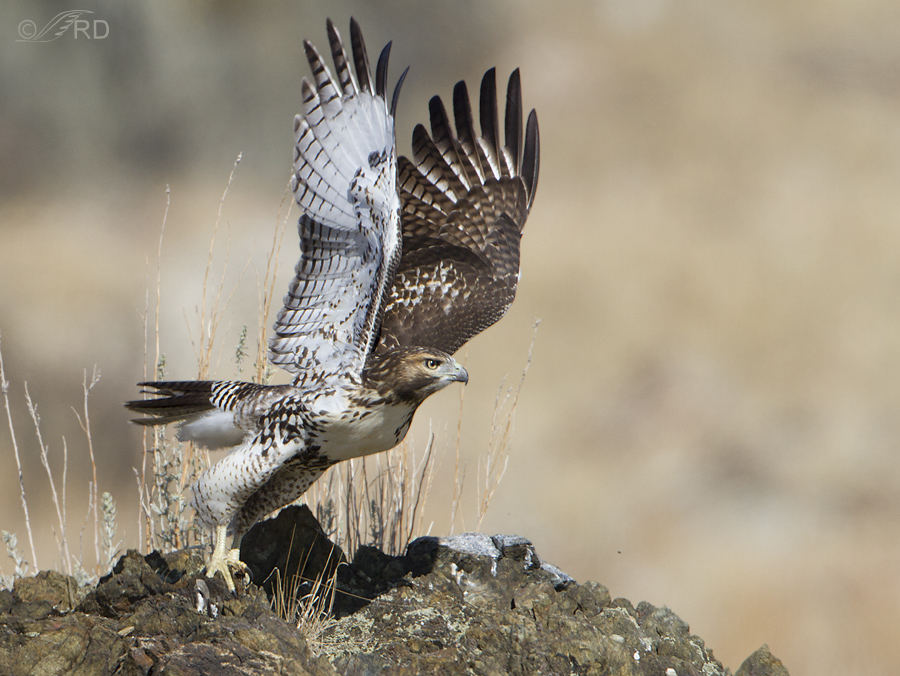
1/2000. f/7.1, ISO 500, 500 f/4, 1.4 tc, not baited
The rocks are on the side of a small mountain with vole-laden prairie grass between me and the hawk so the bird would perch on them and then take off for prey it spotted – often in my general direction. The prey is presumable nearly always voles though these young birds are usually unsuccessful. It did catch and eat a small snake once but the action was buried in the grasses. I’ve yet to see it actually catch a vole and that makes me feel sympathy for the hawk but on the other hand all these attempts at prey have given me some nice photo ops.
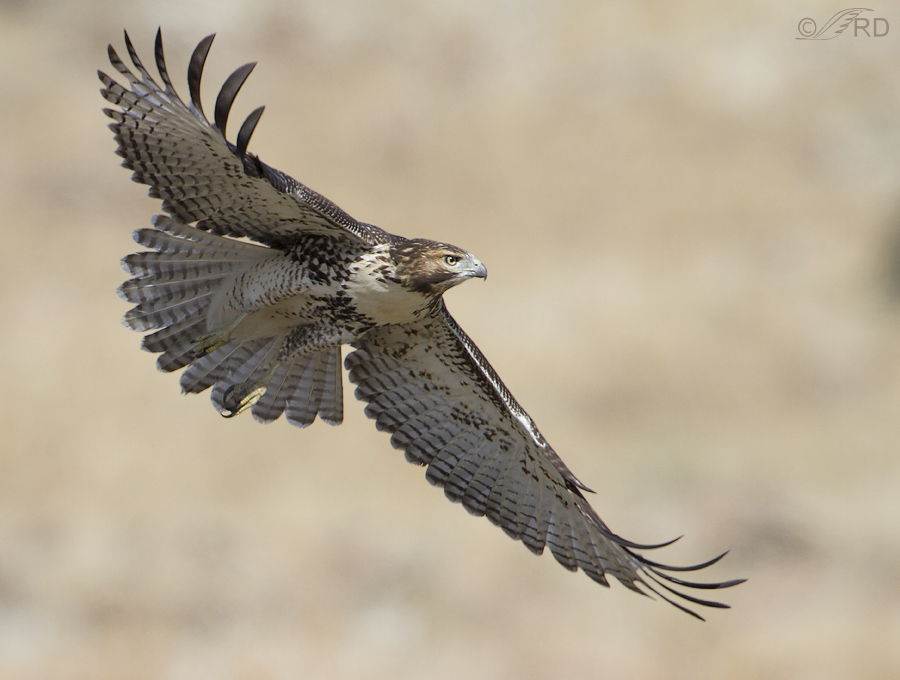
1/2000. f/7.1, ISO 500, 500 f/4, 1.4 tc, not baited
Usually the setting had grass and/or rocks in the background and often it was close enough to the hawk to make focus-lock difficult but here the background was a little further away. On both days by the time the bird cooperated the sun was high enough that the underside was typically in shade but the dead grasses are light enough in color that they reflect sufficient light upwards to provide some detail in the shadows.
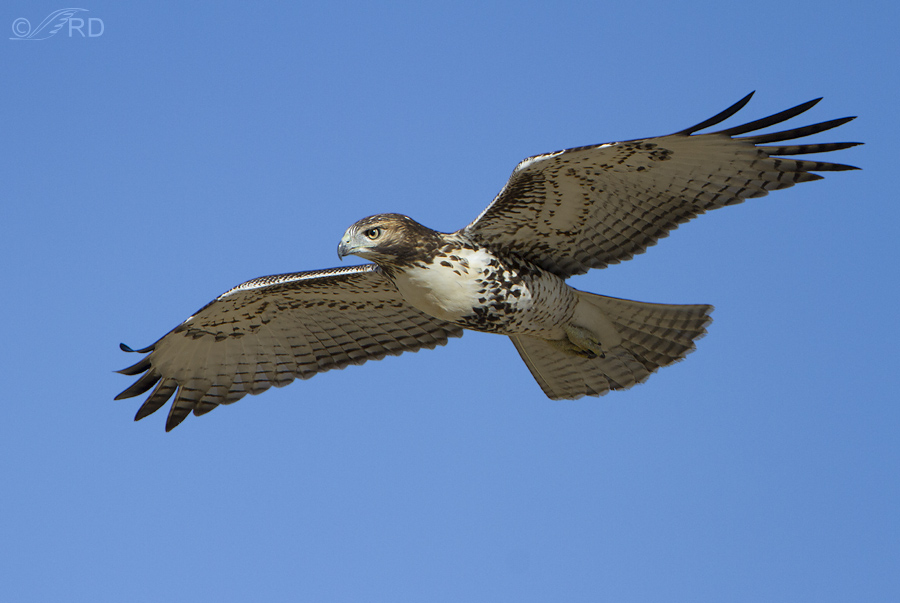
1/2000. f/6.3, ISO 500, 500 f/4, 1.4 tc, not baited
Only one time did I get blue sky in the background as the hawk soared downward toward the grasses and prey it had spotted. It came so close this time that the bird almost filled my frame but it never took its eye off the prey to check me out as it passed. That’s concentration!
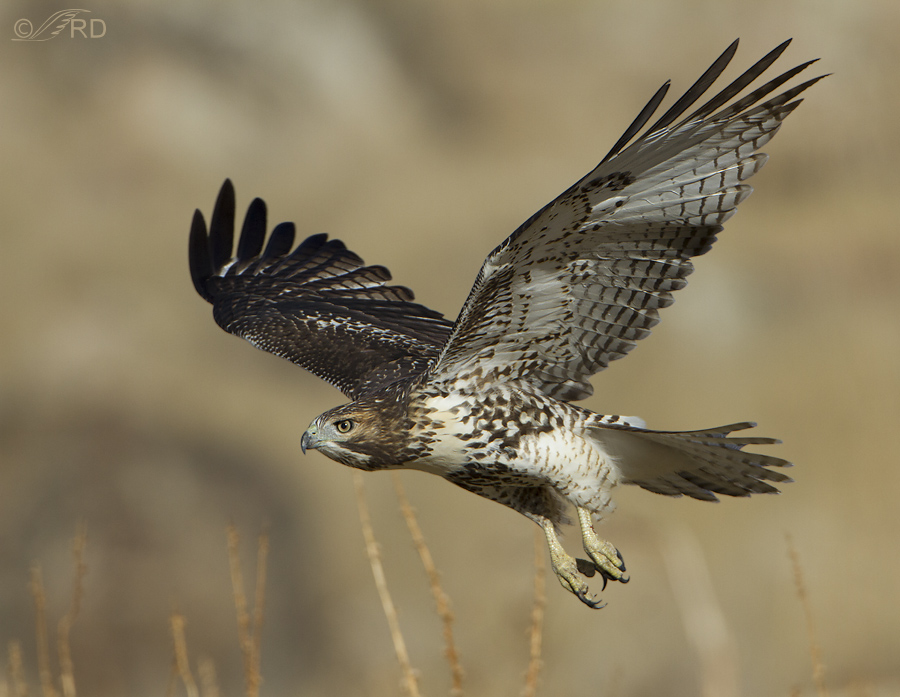
1/2000. f/7.1, ISO 400, 500 f/4, 1.4 tc, not baited
Here the hawk is coming in to land on one of the rocks but as it was actually landing it was so close that I clipped body parts in every shot. Curses!
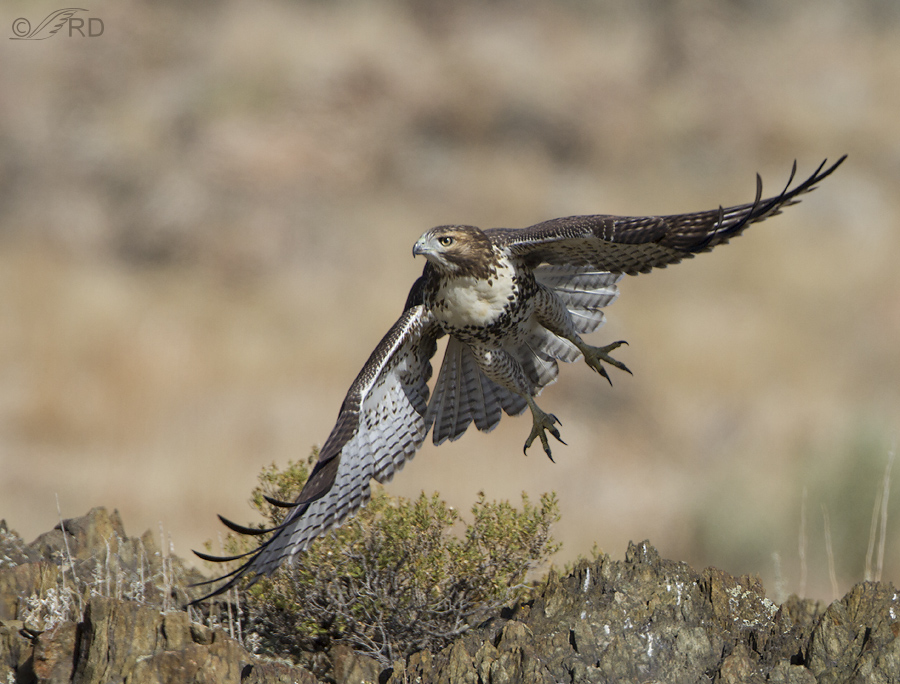
1/2000. f/7.1, ISO 400, 500 f/4, 1.4 tc, not baited
In this image the bird had just launched from the rocks in the background. The last-second head turn to put light on the face saved the shot.
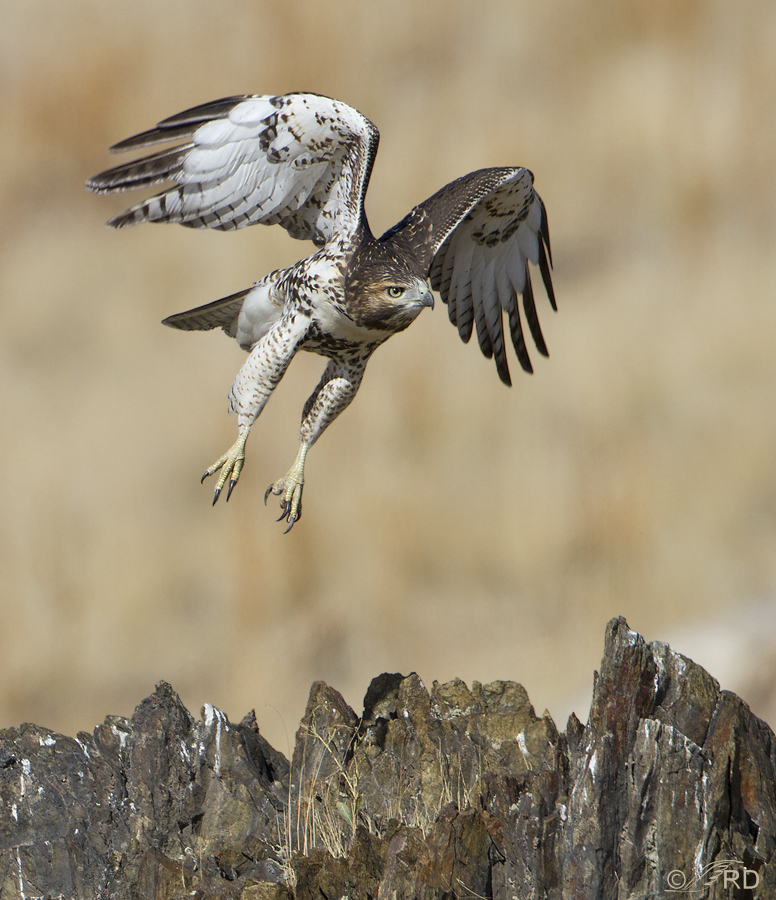
1/3200. f/7.1, ISO 500, 500 f/4, 1.4 tc, not baited
Given the wing position, the direction of flight and the fact that I like the rocks below, I decided on a slightly unconventional crop for this image.
I have more photos of this bird that I’ll post sometime in the future.
Ron
Postscript: Starting today I’ll include the words “not baited” in the techs under each raptor image I post. Baiting raptors to get the shot has become such a common (and deplorable) practice that many folks just assume these types of images have been baited. At the risk of sounding self-righteous about it I want it understood that I do not bait – never have and never will.


I have never baited myself but I am really tempted to give it a try. I see you are using a 500mm/f4 lens which makes your decision not to bait much easier. I can’t afford that kind of equipment so I am stuck with using a 300mm/f4 with a 1.4xTC. I have become very frustrated “chasing” hawks with very limited success and that is why I am contemplating baiting. I suppose a better alternative is to set up a blind where you know the hawk may be hunting and sit and wait and wait and wait some more.
I would be very much interested in your camo technique if indeed this is what you are doing.
I should add that I am not a pro and only want shots of these great birds for my own personal use. Also the idea of shooting birds in captivity is not appealing to me at all.
I look forward to your helpful comments.
Regards,
Charlie Hastings
Charlie and I have been corresponding in some detail via email about the issues he’s brought up, but I’ll summarize what I’ve said to him regarding his comment here.
a. I don’t have a “camo technique” – virtually all of my bird photography is done using my vehicle as a mobile blind.
b. Enough “reach” for bird photography is often an issue and is very expensive when it comes to quality lenses.
c. I told Charlie that, in my opinion, baiting birds (particularly raptors) is highly unethical and that I hope he considers the “baiting option” very carefully before potentially deciding to go that route.
Thank you both, Sid and Ingrid, for the kind words about these images.
Is it cheating to just echo what Dwynn and ingrid said? Well, and the rest? Fabulous shots, as always.
I’m always overwhelmed by the beauty and clarity of your photos. This is a stunning series, Ron, I love it.
Another wonderful collection of raptor action shots. I agree with Dwynn, this collection is one of your best. I, too, never bait to get my photos, unless I am photographing at a blind at the park, where volunteers regularly put bird seed out to attract them. Personally, I have my most fun, when I am in my car, just prowling around through the woods and parks. trying to get more natural photos.
Thank you Bob. I agree, not baiting is just more natural – for the birds, for the photographer and for the images. After all, I consider myself to be a NATURE photographer…
Wonderful, wonderful images. I particularly like the curl at the wing tips on the second photo. Thank you so much. And I look forward to any and all of your photos as they are both an education and a delight.
Thanks so much for your continuing support Elephant’s Child. I’m delighted that you appreciate the educational aspects of my blog.
These photos are so amazing. Do you do anything with Hawkwatch? Or Cornell? Really, your information and observations are stellar.
Thank you Tana. I’ve taught a bird photography class for Hawkwatch and Cornell has asked to use one of my photos showing unusual behavior but that’s about it.
Hi Ron, Wonderful images as always. I applaud (taking my hands off the keyboard for a few seconds in order to do so) your “no baiting” approach, and I like that you will be stating that fact. In addition to letting folks know what your ethical stance is, you might very well influence other photographers, especially those just starting out. And that’s a good thing…
Thanks for the feedback Dick, particularly about baiting.
I’ve been following your blog since I discovered it several months ago, and I’ve always thought your images were spectacular. But today you outdid yourself. This is the most beautiful series of raptor photos I have ever seen!
Thanks very much Dwynn.